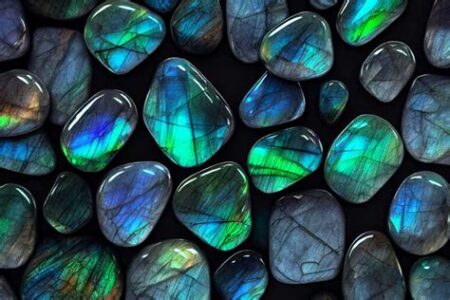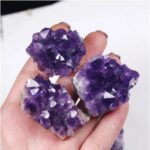Quartz pebbles, the lustrous and durable gems found in abundance around the globe, are more than just aesthetically pleasing stones. Their unique properties and versatility extend their uses far beyond ornamental purposes, unlocking endless possibilities in various industries and applications.

Exceptional Properties of Quartz Pebbles
- Durability: Quartz is renowned for its exceptional hardness, making it resistant to wear and tear even under extreme conditions. This attribute renders quartz pebbles ideal for applications where longevity and abrasion resistance are paramount.
- Chemical Inertness: Quartz pebbles exhibit exceptional chemical inertness, meaning they do not react with most substances. This property makes them suitable for use in harsh chemical environments or as a filter media to remove impurities from water.
- High Thermal Stability: Quartz pebbles can withstand high temperatures without losing their shape or integrity. This characteristic makes them ideal for use in thermal applications, such as refractories in furnaces or as fire retardants.
- Electrical Insulation: Quartz pebbles possess excellent electrical insulating properties, making them suitable for use in electrical applications such as insulators or substrates for electronic components.
The versatility of quartz pebbles extends across numerous industries, including:
Building and Construction
- Floor and Wall Coverings: Quartz pebbles are used as decorative aggregates for flooring and wall coverings, creating a visually stunning and durable surface that can withstand heavy foot traffic.
- Landscaping: Quartz pebbles are employed in landscaping for pathways, garden beds, and water features, providing both aesthetic appeal and drainage benefits.
- Masonry: Quartz pebbles are used as a component in mortar and concrete mixes, enhancing their strength and durability.
Chemical and Environmental Applications
- Water Filtration: Quartz pebbles are used as a filter media in water purification systems, effectively removing suspended solids, impurities, and bacteria.
- Chemical Processing: Quartz pebbles are used as a catalyst or support material in various chemical reactions, providing a stable and inert surface for chemical reactions.
- Environmental Remediation: Quartz pebbles are utilized in environmental remediation projects as a substrate for microorganisms that break down pollutants.
Manufacturing and Industrial Applications
- Abrasives: Quartz pebbles are used as an abrasive material in grinding and polishing processes, effectively removing surface imperfections and shaping materials.
- Thermal Insulation: Quartz pebbles are employed as a thermal insulation material in furnaces and kilns, reducing heat loss and improving energy efficiency.
- Electrical Insulation: Quartz pebbles are used as insulators in electrical applications, preventing current leakage and ensuring safety.
Ornamental and Decorative Uses
- Jewelry: Quartz pebbles are prized for their beauty and are widely used in the creation of jewelry, including necklaces, earrings, and bracelets.
- Arts and Crafts: Quartz pebbles are incorporated into arts and crafts projects, adding texture, color, and visual interest to various creations.
- Decorative Objects: Quartz pebbles are used as decorative objects in homes and offices, bringing a touch of nature and elegance to any space.
The concept of “pebbilization” can spark innovative ideas for utilizing quartz pebbles in novel and groundbreaking applications. By breaking down larger quartz stones into smaller pebbles, we can unlock new possibilities:
- Nanotechnology: Quartz pebbles can be reduced to nanoscale, opening up opportunities for advanced applications in electronics, energy storage, and medical devices.
- Biomaterials: Quartz pebbles can be functionalized and integrated into biomaterials, providing unique properties for tissue engineering and regenerative medicine.
- Smart Materials: Quartz pebbles can be coated with sensors or other functional materials, enabling them to respond to environmental changes or perform specific tasks.
According to the United States Geological Survey (USGS), the global production of quartz pebbles reached 2.3 million metric tons in 2021, with major producing countries including China, India, and the United States.
The construction industry accounts for the largest consumption of quartz pebbles, with approximately 60% of global production used for this purpose. The chemical and environmental sectors account for another 20% of consumption, while manufacturing and industrial applications make up the remaining 20%.
The growing demand for quartz pebbles is driven by the increasing use of concrete and other building materials, as well as the expanding use of quartz pebbles in water filtration and environmental remediation projects.
| Region | Production (Million Metric Tons) |
|---|---|
| Asia | 1.5 |
| North America | 0.4 |
| Europe | 0.2 |
| South America | 0.1 |
| Africa | 0.1 |
| Industry | Consumption (Million Metric Tons) |
|---|---|
| Construction | 1.4 |
| Chemical and Environmental | 0.5 |
| Manufacturing and Industrial | 0.4 |
| Property | Value |
|---|---|
| Hardness | 7 on the Mohs scale |
| Chemical Inertness | High |
| Thermal Stability | Excellent |
| Electrical Insulation | Excellent |
| Application | Description |
|---|---|
| Nanobatteries | Quartz pebbles reduced to nanoscale for enhanced energy storage. |
| Smart Pebbles | Quartz pebbles coated with sensors for monitoring environmental conditions. |
| Biodegradable Pebbles | Quartz pebbles functionalized with biocompatible materials for tissue engineering. |
Effective Strategies for Using Quartz Pebbles
- Choose the right size and shape: Select quartz pebbles that are appropriate for the intended application based on factors such as size, shape, and surface texture.
- Prepare the pebbles: Clean and prepare the quartz pebbles to remove any dirt or impurities that could affect their performance or appearance.
- Use the right binder: When using quartz pebbles in construction or manufacturing applications, select a binder that is compatible with both the pebbles and the intended substrate.
- Protect the pebbles (if necessary): For applications where the quartz pebbles may be exposed to harsh conditions, consider using a protective coating to extend their lifespan.
1. What is the difference between quartz pebbles and river rocks?
Quartz pebbles are specifically composed of quartz, while river rocks can be composed of various minerals, including quartz. Quartz pebbles tend to have a more uniform shape and smoother surface than river rocks.
2. Are quartz pebbles safe to use in water features?
Yes, quartz pebbles are generally safe to use in water features as they are non-toxic and do not release harmful substances into the water.
3. Can quartz pebbles be used in fireplaces?
Yes, quartz pebbles can be used in fireplaces as they are heat resistant and can withstand high temperatures without cracking or breaking.
4. How do I clean quartz pebbles?
Quartz pebbles can be cleaned by rinsing them with water and using a mild detergent if necessary. Avoid using harsh chemicals or abrasive cleaners.
5. What is the cost of quartz pebbles?
The cost of quartz pebbles varies depending on factors such as size, shape, and quantity. Contact suppliers or retailers for specific pricing information.
6. How can I find quartz pebbles?
Quartz pebbles can be found in riverbeds, gravel pits, and other locations where natural stone deposits are present. They can also be purchased from landscaping supply stores or online retailers.
7. What are the environmental benefits of quartz pebbles?
Quartz pebbles are a natural and renewable resource. They can help reduce waste by replacing synthetic materials in various applications, and they can also contribute to sustainable building practices by providing durable and low-maintenance surfaces.
8. What are some creative uses for quartz pebbles?
Quartz pebbles can be incorporated into artwork, used as weights for paper or fabric, or used as a decorative element in terrariums or aquariums. Their versatility allows for endless creative possibilities.




























